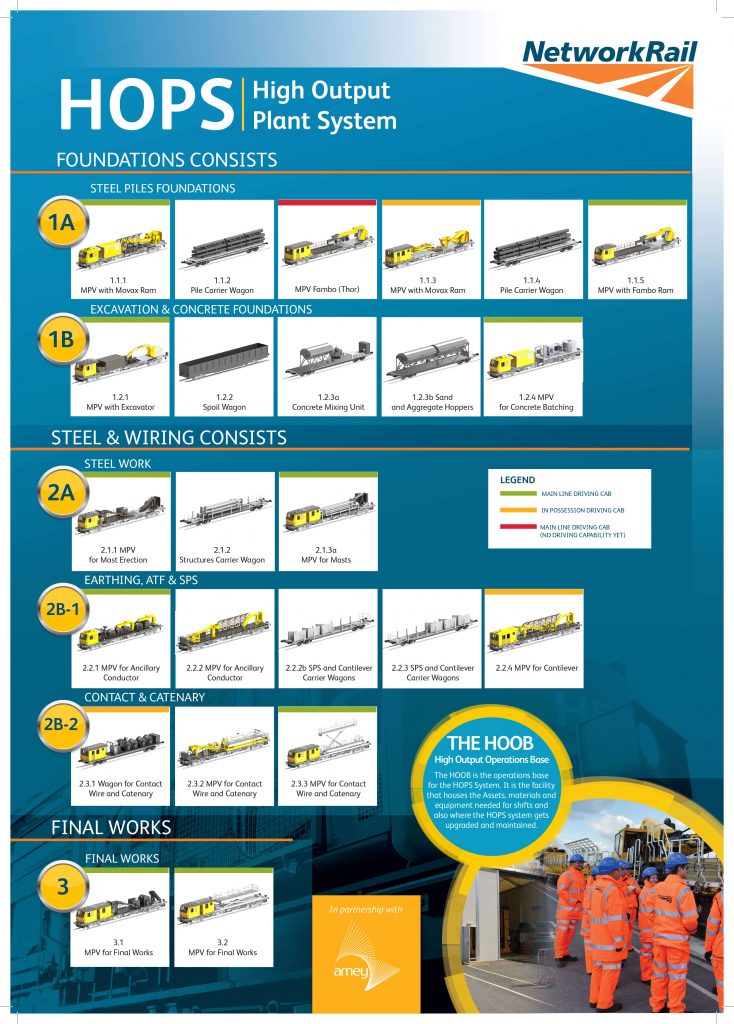Our HOPS train is used for our project to electrify the Great Western Mainline.
Based at our High Output Operations Base in Swindon, the £40m state-of-the-art HOPS train builds overhead line equipment (OLE) for electrification of the Great Western Mainline.
It works for seven to eight hours – depending on where it’s being used – for six nights a week.
With a top speed of 60mph – but working at 5mph during a possession, or 15mph if it’s the only activity on site – the HOPS train can build the electrical infrastructure at an average of around one mile (1.6km) per night.
Factory train
Before starting work, our HOPS was tested on the High Marnham track, part of our Tuxford Rail Innovation & Development Centre.
Made up of 23 vehicles forming five ‘consists’ (the elements of the HOPS), the HOPS factory train has three specialised sections – each delivers a different stage of work:
- There are two ‘consists’ each of five vehicles to build foundations for the OLE support structures that hold the electric wires. Five of them dig the foundations (which are one metre square by four metres deep) and fill them with concrete, while another five drive the steel tube piles into the ground. The piles measure between 610mm and 762mm in diameter.
- There are three vehicles in the ‘consist’ that installs the main steelwork for the 15,000 OLE structures, as well as five in the ‘consist’ for installing ‘small parts steelwork’, and three to hang up the wires.
- The third section has two platform vehicles for the final stages of wiring.
The HOPS is pre-loaded with everything it needs to install the overhead wiring and the structures that hold the electrical equipment.
Operating the train
As with all High Output work, operating the HOPS train is a collaborative effort, from planning to logistics, materials supply and delivery. Every day, each vehicle is unloaded, refuelled, maintained and restocked.
Contractor Amey operates the HOPS train and provides the teams to cover the shifts as well as for maintenance and logistics. These teams manage and operate the Swindon operating base. Amey is working with us to increase the specialised OLE workforce in the South West, where the Great Western modernisation project is taking place, such as by supporting our Electrification Training Centre in Swindon.
HOPS in numbers
- It can carry 30 piles in total.
- Per shift, it can install 15-20 piles, with each pile taking less than 15 minutes to install.
- It can hold 4 drums of electrical wire.
- Typically it installs 10-15 steel gantry sections (masts and booms) per shift (but can do up to 25-30 per shift).
- It installs 1-2 contact and catenary wires per shift (these wires carry electricity to the train through its pantograph).
